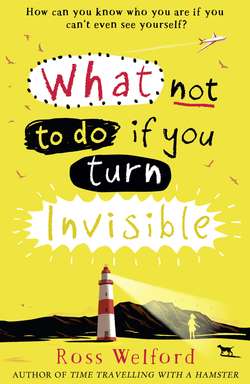Читать книгу What Not to Do If You Turn Invisible - Ross Welford, Ross Welford - Страница 30
INTERESTING FACTS ABOUT LIGHTHOUSES
ОглавлениеBy Elliot Boyd
With thanks to Ethel Leatherhead for allowing me space to say why lighthouses are awesome.
(I did this list for a talk I did at school in Mr Parker’s class. He said people really liked it, which makes me think lighthouses are not such a strange interest after all.)
Humans have been building lighthouses to warn ships about dangerous rocks ever since humans had ships. The first ones were basically just massive bonfires on cliffs!
Now there are 17,000 worldwide, and about 300 in the UK.
The lighthouse on the island of Pharos near Alexandria in Egypt was one of the wonders of the ancient world and was built in 270 BC. It stood for 1,500 years and then collapsed in an earthquake. In 1994 pieces of it were found at the bottom of the ocean!
In many languages, the word for ‘lighthouse’ comes from ‘Pharos’. Phare (French), Faro (Spanish and Italian). Farol (Portuguese), Far (Romanian), fáros (Greek)!
The brightness of a lighthouse is measured in candelas – that is, the brightness of a single candle. Modern lighthouses have beams that are between 10,000 and 1 million candelas bright!
One of the brightest lighthouses in the world is Oak Island Lighthouse in the USA: 2.5 million candelas!!!
In 1822 a Frenchman physicist called Augustin-Jean Fresnel developed a lens that multiplied the brightness of the light inside, meaning it could be seen much further. Almost all lighthouses now use the Fresnel Lens!
Long after the invention of electricity, most lighthouses continued to be powered by oil. St Mary’s Lighthouse in Whitley Bay did not convert to electricity until 1977. It has not been active since 1984, which I think is a real shame!
Mr Parker wrote on my presentation: 9/10. Well researched and confidently delivered. Well done. Easy on the exclamation marks.
